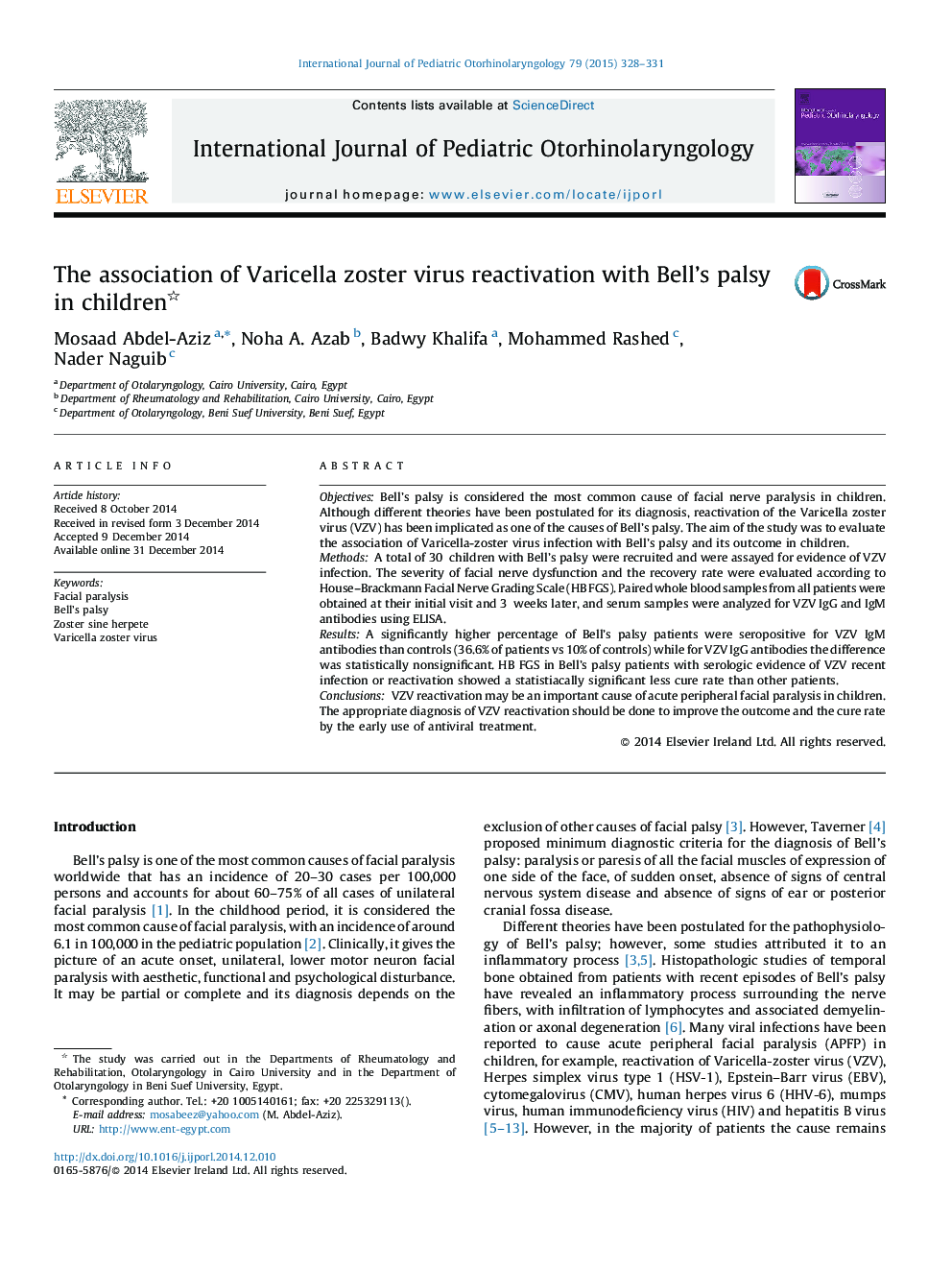| Article ID | Journal | Published Year | Pages | File Type |
|---|---|---|---|---|
| 4111963 | International Journal of Pediatric Otorhinolaryngology | 2015 | 4 Pages |
ObjectivesBell's palsy is considered the most common cause of facial nerve paralysis in children. Although different theories have been postulated for its diagnosis, reactivation of the Varicella zoster virus (VZV) has been implicated as one of the causes of Bell's palsy. The aim of the study was to evaluate the association of Varicella-zoster virus infection with Bell's palsy and its outcome in children.MethodsA total of 30 children with Bell's palsy were recruited and were assayed for evidence of VZV infection. The severity of facial nerve dysfunction and the recovery rate were evaluated according to House–Brackmann Facial Nerve Grading Scale (HB FGS). Paired whole blood samples from all patients were obtained at their initial visit and 3 weeks later, and serum samples were analyzed for VZV IgG and IgM antibodies using ELISA.ResultsA significantly higher percentage of Bell's palsy patients were seropositive for VZV IgM antibodies than controls (36.6% of patients vs 10% of controls) while for VZV IgG antibodies the difference was statistically nonsignificant. HB FGS in Bell's palsy patients with serologic evidence of VZV recent infection or reactivation showed a statistiacally significant less cure rate than other patients.ConclusionsVZV reactivation may be an important cause of acute peripheral facial paralysis in children. The appropriate diagnosis of VZV reactivation should be done to improve the outcome and the cure rate by the early use of antiviral treatment.
